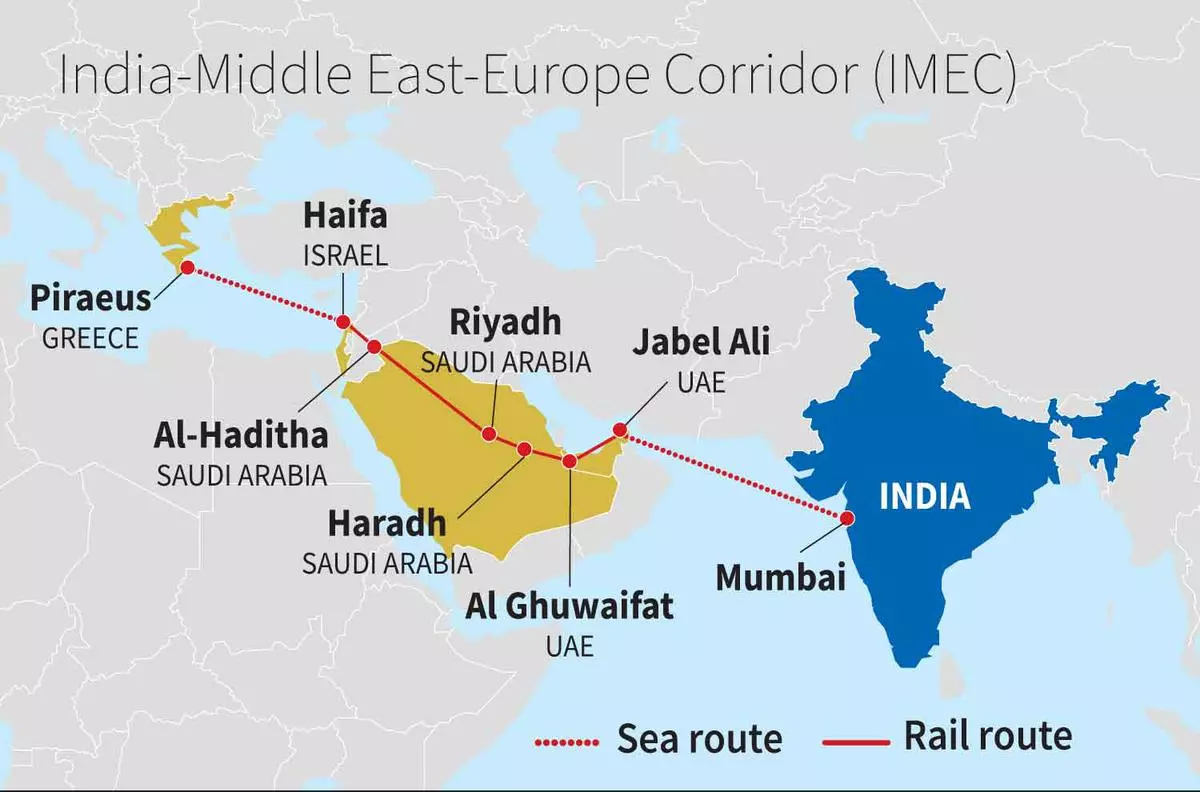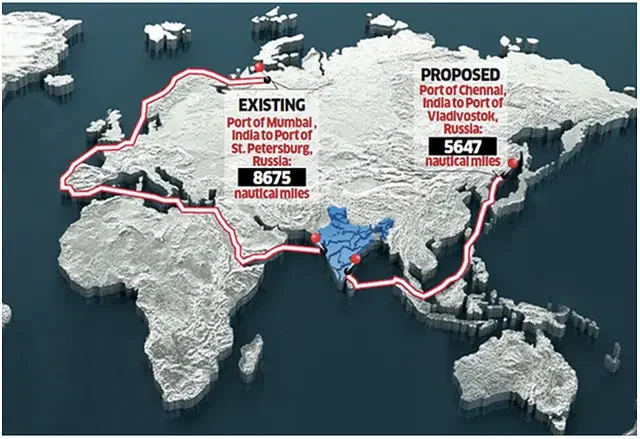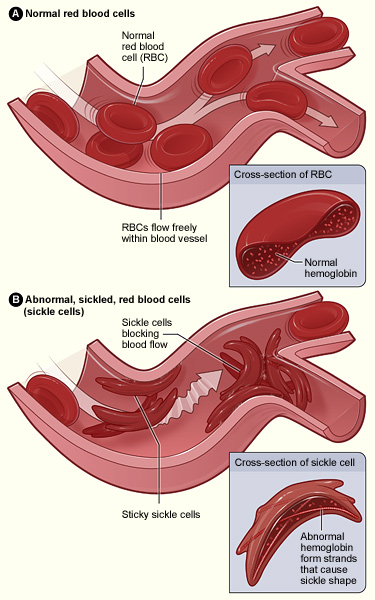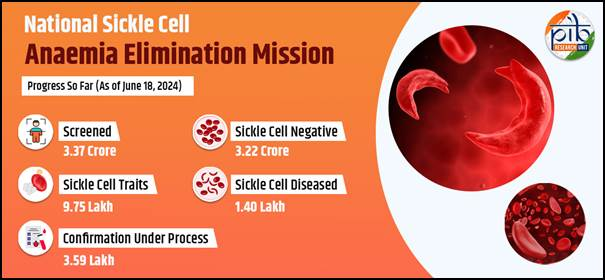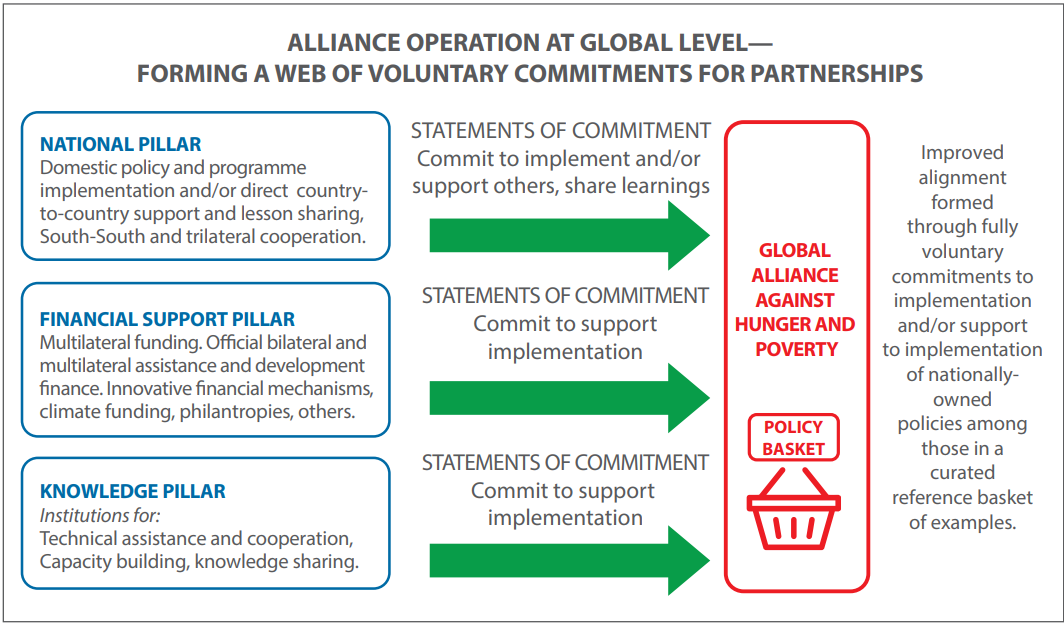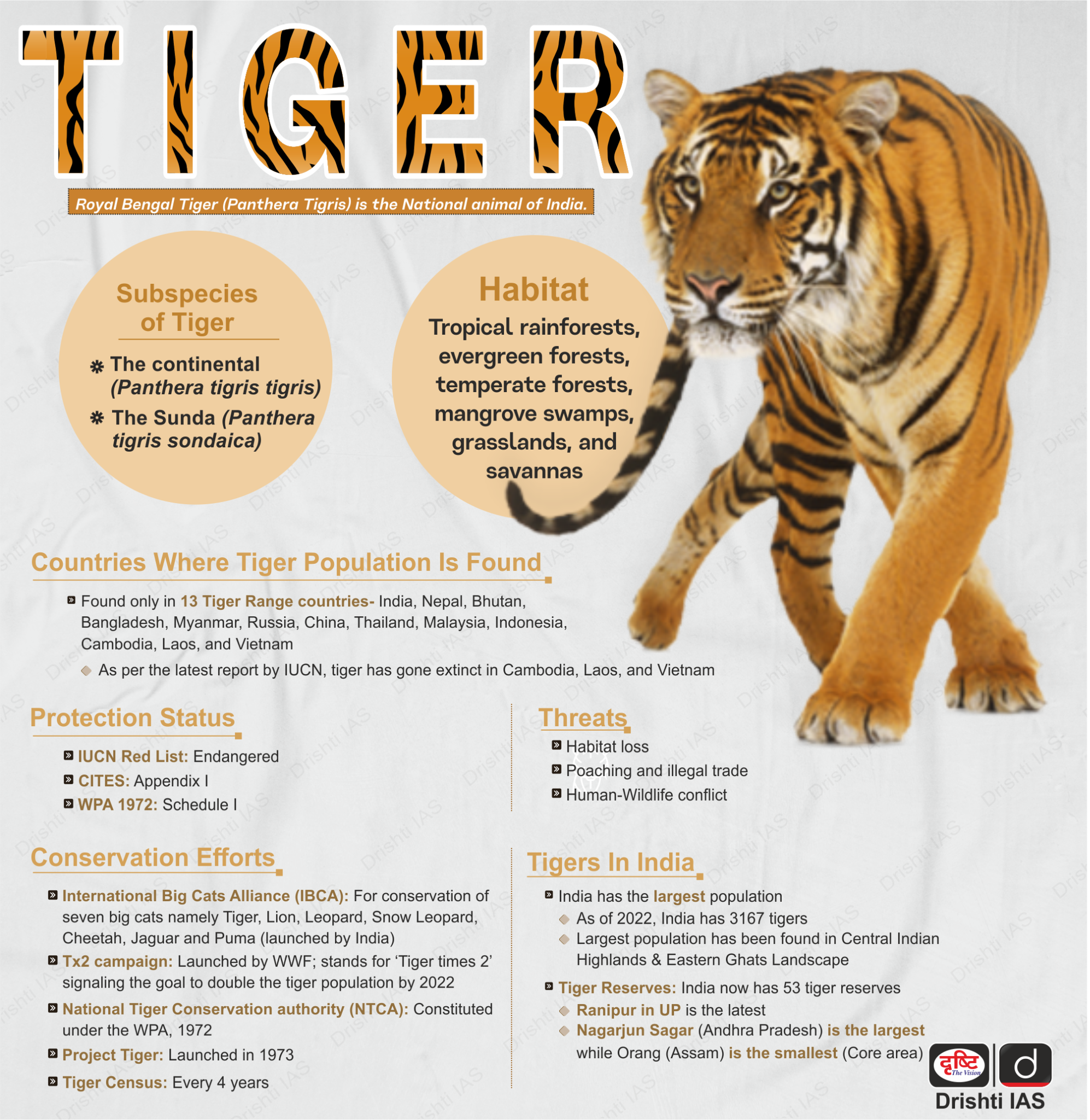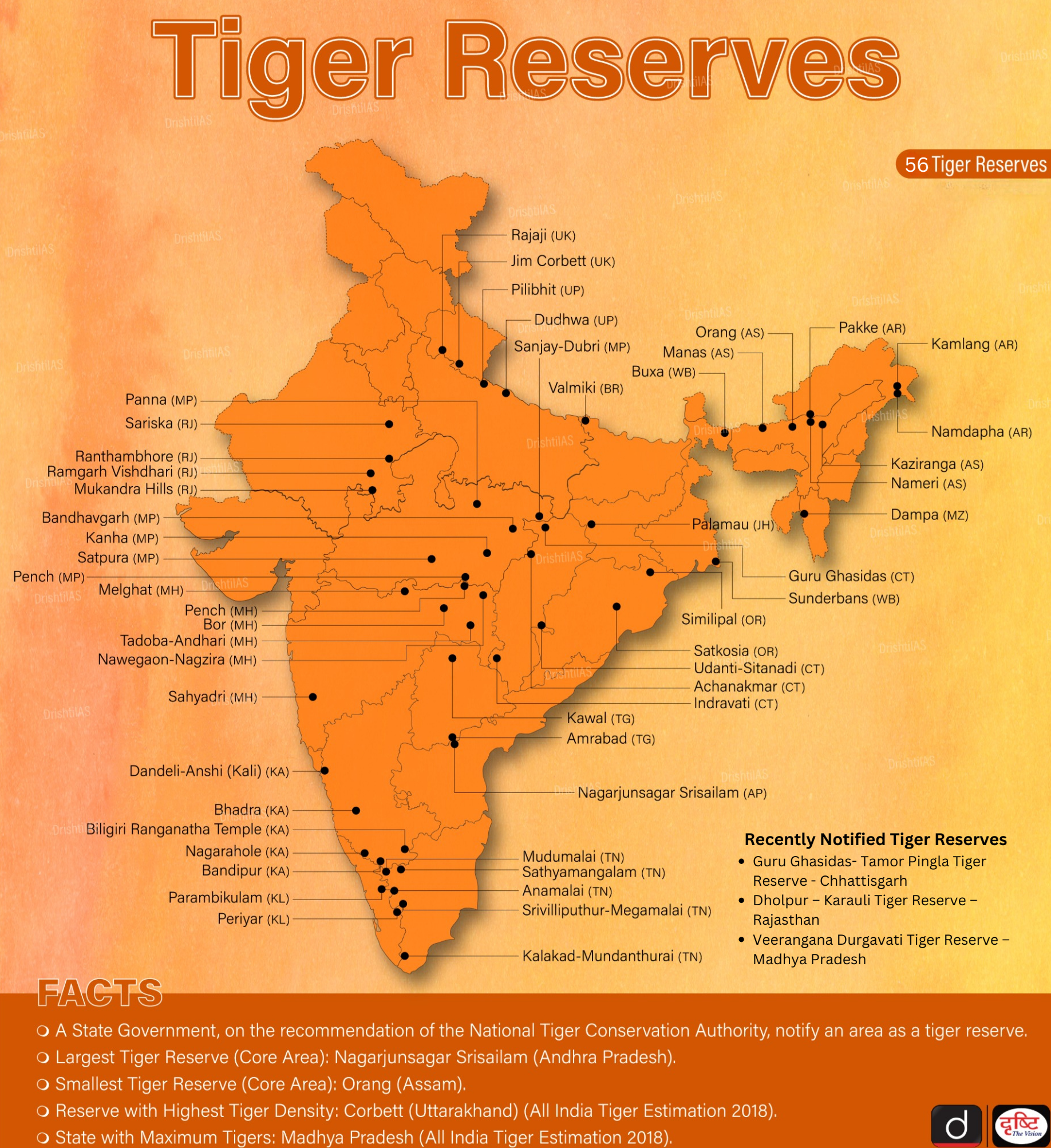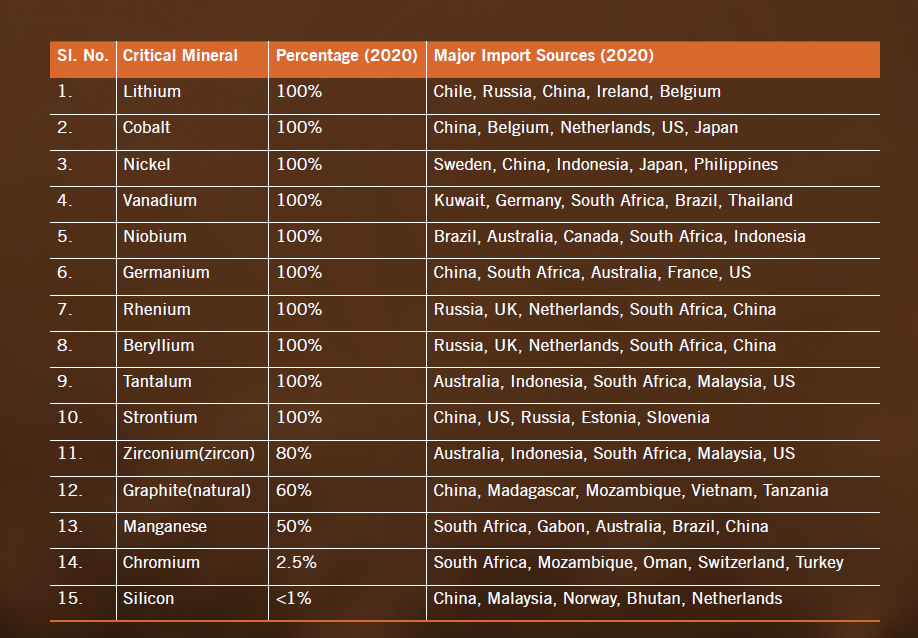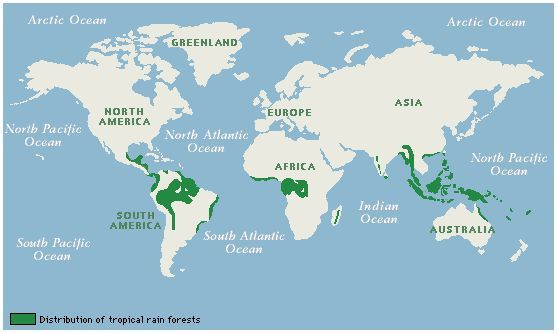Indian Economy
Developments in India’s Maritime Sector
For Prelims: Blue Economy, Critical Minerals, India-Middle East-Europe Economic Corridor, G20 New Delhi Summit 2023, Vizhinjam International Seaport, Vadhavan, Galathea Bay, Port Authority Act, 2021, National Waterways Act, 2016, Inland Vessel Act, 2021, Recycling of Ships Act, 2019, Lothal, Chennai-Vladivostok Maritime Corridor, Northern Sea Route, International North-South Transport Corridor, Belt and Road Initiative (BRI), Sagarmala Program, Make in India, Indian Ocean Rim Association (IORA).
For Mains: Significance of maritime trade in economic developments, Key developments in recent past.
Why in News?
The Ministry of Ports, Shipping and Waterways, in collaboration with the Observer Research Foundation (ORF), organized the inaugural Sagarmanthan: The Great Oceans Dialogue, highlighting key developments in India’s maritime sector, focusing on maritime logistics, ports, and shipping.
What are the Key Developments in India’s Maritime Sector?
- Chennai-Vladivostok Eastern Maritime Corridor: It became operational at the end of 2023, facilitating cargo transport between India and Far East Russia handling key imports like crude, food, and machinery.
- India-Middle East-Europe Economic Corridor (IMEC): It announced at the G20 New Delhi Summit 2023, spans over 4,800 km, connecting India to the UAE, Saudi Arabia, Jordan, Israel, and European nations—Italy, France, and Greece—via a railway and sea route. India and Greece are collaborating on this initiative.
- Maritime Vision 2047: India aims to be the top maritime nation by 2047, focusing on ports, cargo, ship ownership, shipbuilding, and reforms.
- India is also working on building a port handling capacity of 10,000 million metric tonnes per annum by 2047.
- Investment in Maritime Infrastructure: India plans to invest Rs 80 lakh crore in the maritime sector in key projects like Vizhinjam international seaport in Kerala, new mega ports at Vadhavan (Maharashtra) and Galathea Bay (Nicobar Islands).
- Advancement towards building ships powered by clean fuels like ammonia, hydrogen, and electricity for sustainability.
- Port Turnaround Time: Port turnaround times have improved significantly, reducing from over 40 to 22 hours, surpassing nations like the US and Singapore.
- Port turnaround time represents the time a ship takes to unload, load, perform operations, and be ready for the next voyage.
- Revamped Legislation: Major Port Authority Act, 2021, National Waterways Act, 2016, Inland Vessel Act, 2021, and Recycling of Ships Act, 2019 had already accelerated growth in the ports, waterways, and ship recycling sectors.
- The Coastal Shipping Bill, 2024, and the Merchant Shipping Bill, 2020, will soon boost coastal shipping, shipbuilding, and recycling in India.
- Preserving Legacy: The national maritime heritage complex is being built at Lothal to revive India's shipbuilding legacy.
IMEC
- It is a major infrastructure and trade connectivity project aimed at enhancing economic and trade links between India, the Middle East, and Europe.
- The proposed IMEC will consist of Railroad, Ship-to-Rail networks and Road transport routes extending across two corridors:
- The East Corridor – connecting India to the Arabian Gulf,
- The Northern Corridor – connecting the Arabian Gulf to Europe.
- The IMEC corridor will also include an electricity cable, a hydrogen pipeline and a high-speed data cable.
Chennai-Vladivostok Maritime Corridor?
- About: The Chennai-Vladivostok Maritime Corridor is a sea link connecting the east coast of India with ports in the far-east region of Russia, particularly the Chennai Port and Vladivostok Port.
- Distance Reduction: The new route cuts the distance from 8,675 nautical miles (via Europe) to approximately 5,600 nautical miles.
- Time Reduction: It significantly reduces the time required to transport goods between India and Far East Russia by up to 16 days, with the journey now taking 24 days compared to the previous 40 days.
- Strategic Importance: Vladivostok is the largest Russian port on the Pacific Ocean, and it is located about 50 kilometres from the China-Russia border.
- Trade Potential: A feasibility study indicates significant potential for trading commodities such as coking coal, oil, fertilisers, containers, and liquefied natural gas (LNG) between India and Russia.
- Complementary Initiatives: The Chennai-Vladivostok corridor is aligned with other initiatives, such as the Northern Sea Route and the International North-South Transport Corridor (INSTC).
What are the Challenges in India’s Maritime Sector?
- Competition from China: In less than 70 years, China has become a global maritime power, with a large navy, coast guard, the largest merchant fleet, and leading ports.
- Its Belt and Road Initiative (BRI) further strengthens its position as a maritime competitor.
- Inefficient Port Infrastructure: The modernization of existing ports and the construction of new ports have faced delays, and many objectives under the Maritime Agenda 2010-2020 were not met by 2020.
- While port connectivity is a focus of the Sagarmala program, intermodal transportation (especially linking ports to inland transport networks) remains underdeveloped.
- Lack of Private Sector Participation: India’s maritime economy, particularly in the context of port-led industrialization, still suffers from insufficient involvement of private players.
- Sustainability Concerns: Maritime trade and port development often face environmental scrutiny, especially with regard to coastal ecosystem degradation and the environmental impact of large infrastructure projects.
- Geopolitical Challenges: The shifting geopolitical dynamics and new global maritime challenges, such as threat of non-state actors (e.g., Houthis attack on commercial vessels) pose risks to India’s maritime trade.
- Dependence on Foreign Shipbuilding: Despite strides in indigenous shipbuilding, India remains largely dependent on foreign technology for shipbuilding and maritime equipment.
What are Recent Government Initiatives in India’s Maritime Sector?
Way Forward
- Fast-Tracking Port Modernization: The Sagarmala Programme, launched to promote port-led industrialization, should be expedited, with a focus on prioritising the modernisation of domestic shipyards, reducing bureaucratic hurdles and ensuring timely project implementation.
- Incentivizing Private Investment: The government should provide more incentives for private participation in the maritime sector through favourable policies, tax breaks, and investment-friendly regulations.
- Promotion of Port-Led Industrialization: India should focus on creating industrial clusters around ports, making use of the Make in India initiative.
- Promotion of Green Shipping: The promotion of alternative fuels like LNG (liquefied natural gas) and renewable energy sources for vessels can reduce the carbon footprint of maritime trade.
- Multilateral Maritime Cooperation: India should increase its engagement with regional and multilateral security frameworks, such as the Indian Ocean Rim Association (IORA) to ensure cooperative maritime security.
|
Drishti Mains Question: Q. Examine the recent advancements in India’s maritime sector and analyze how they contribute to strengthening the country's economic growth and strategic partnerships globally. |
UPSC Civil Services Examination, Previous Year’s Question (PYQs)
Prelims
Q.Consider the following in respect of Indian Ocean Naval Symposium (IONS): (2017)
1. Inaugural IONS was held in India in 2015 under the chairmanship of the Indian Navy.
2. IONS is a voluntary initiative that seeks to increase maritime co-operation among navies of the littoral states of the Indian Ocean Region.
Which of the above statements is/are correct?
(a) 1 only
(b) 2 only
(c) Both 1 and 2
(d) Neither 1 nor 2
Ans: (b)
Q.With reference to ‘Indian Ocean Rim Association for Regional Cooperation (IOR-ARC)’, consider the following statements: (2015)
1. It was established very recently in response to incidents of piracy and accidents of oil spills.
2. It is an alliance meant for maritime security only.
Which of the statements given above is/ are correct?
(a) 1 only
(b) 2 only
(c) Both 1 and 2
(d) Neither 1 nor 2
Ans: (d)
Q.Southeast Asia has captivated the attention of the global community over space and time as a geostrategically significant region. Which among the following is the most convincing explanation for this global perspective? (2011)
(a) It was the hot theatre during the Second World War
(b) Its location between the Asian powers of China and India
(c) It was the arena of superpower confrontation during the Cold War period
(d) Its location between the Pacific and Indian oceans and its preeminent maritime character
Ans: (d)
Mains
Q.Project ‘Mausam’ is considered a unique foreign policy initiative of the Indian government to improve relationships with its neighbours. Does the project have a strategic dimension? Discuss.(2015)
Q.With respect to the South China sea, maritime territorial disputes and rising tension affirm the need for safeguarding maritime security to ensure freedom of navigation and overflight throughout the region. In this context, discuss the bilateral issues between India and China. (2014)


Social Justice
Tribal Development Approaches
For Prelims: Haka, Sentinelese tribe, Traditional knowledge, Sixth Schedule, Tribal Panchsheel policy, Pradhan Mantri Van Dhan Yojana.
For Mains: Indigenous Rights, Tribal Development Policies in India, Challenges in Balancing Modern Governance and Cultural Heritage.
Why in News?
Recently, Hana-Rawhiti Kareariki Maipi-Clarke, the youngest sitting Member of Parliament in New Zealand, who is representing a Maori tribe in the country, staged a haka protest against the Treaty Principles Bill, which seeks to reinterpret the 1840 Treaty of Waitangi.
- The protest highlighted the debate on the approaches to tribal development policy in balancing cultural heritage with modern governance.
What is Haka?
- About: The haka is a traditional Maori dance, performed by warriors on the battlefield or to welcome others, involving chanting, facial expressions, and hand movements. It represents Maori identity and has become a symbol of resistance.
- The Maori Tribe is an indigenous tribe who have inhabited New Zealand.
- Haka Protest: The haka protest is a response to the introduction of the Treaty Principles Bill.
- The Bill seeks to reinterpret the 1840 Treaty of Waitangi, a foundational document that established the relationship between the British Crown and Maori chiefs.
- Treaty Principles Bill: It aims to ensure equality for all New Zealanders. Critics argue that by applying the Treaty principles equally to all New Zealanders, the bill fails to recognize the distinct rights of the Māori as Indigenous people.
- This approach is seen as undermining the legal protections afforded to Maori under the Treaty of Waitangi.
What are the Approaches to Tribal Development Policy?
- Isolation: This approach emphasises protecting Indigenous communities by limiting their interaction with modern society to preserve their cultural and ecological systems.
- Examples: The Sentinelese tribe in the Andaman Islands lives in total isolation, protected by strict laws under the Andaman and Nicobar Islands (Protection of Aboriginal Tribes) Act,1956.
- Benefits: Traditional lifestyles, languages, and knowledge systems are preserved.
- Shields communities from external influences that may exploit resources or labour.
- Indigenous lands are often rich in biodiversity, preserved through their sustainable practices.
- Challenges: Isolation often results in lack of healthcare, education, and economic opportunities.
- Communities may remain excluded from national development processes.
- Changes like climate impacts or encroachment can render isolation unsustainable.
- Assimilation: This approach incorporates Indigenous communities into mainstream society, aiming for a unified national identity, but it can undermine their unique cultural practices.
- Examples: In the United States, Native American children were placed in boarding schools to “Americanize” them, suppressing their languages and traditions.
- In Australia aboriginal children from the “Stolen Generations (aboriginal and/or Torres Strait Islander people)” were forcibly removed from their families to assimilate into White culture.
- Benefits: Access to basic amenities like education, healthcare, and job opportunities can improve quality of life. Assimilation can bridge gaps in economic and political representation.
- Challenges: Forced assimilation erodes Indigenous identity by causing the loss of language, traditions, and spiritual practices, weakening cultural heritage.
- The forced assimilation often meets resistance, fostering alienation and distrust between Indigenous peoples and the government, complicating efforts to balance cultural preservation with modern governance.
- Examples: In the United States, Native American children were placed in boarding schools to “Americanize” them, suppressing their languages and traditions.
- Integration: It involves incorporating Indigenous peoples into modern governance while respecting their cultural identity, ensuring their rights, traditions, and autonomy are preserved within broader society.
- Examples: The Gundjeihmi and Bininj tribes work alongside the Australian government in managing Kakadu National Park, combining traditional knowledge with modern conservation practices.
- Benefits: Inclusion in governance gives Indigenous peoples a voice in decision-making processes that affect their communities.
- Recognition of Indigenous rights through modern governance can enhance their ability to protect lands, traditions, and resources.
- Collaborative frameworks can foster trust between Indigenous communities and governments.
- Challenges: Indigenous communities may face systemic racism and inequality despite formal inclusion.
- Governments and industries may resist ceding power or resources to Indigenous authorities.
What is India’s Approach to Tribal Development Policy?
- Pre-Independence Approach: The British enforced an isolationist approach for tribal areas by classifying them as “Excluded” or “Partially Excluded” zones to ensure law and order.
- In 1874, the Scheduled District Act (Act XIV) was introduced in British India, which exempted certain areas from regular laws to protect them from exploitation.
- Post Independence: Government policies have been oriented towards both autonomy and integration.
- Policies focused on autonomy include the Panchayats (Extension to the Scheduled Areas) Act, 1996 (PESA), the Forest Rights Act, 2006 and constitutional safeguards such as the Fifth and Sixth Schedules.
- These measures prioritise preserving tribal self-governance, ensuring minimal interference in their cultural and religious practices, and affirming their rights over land and forest resources.
- The Integration-Oriented Policy aimed to incorporate tribals into the national framework while preserving their identity and autonomy. It is guided by Jawaharlal Nehru's Tribal Panchsheel policy, which emphasises self-development, respect for tribal rights, minimal external imposition, local participation in administration, and human-centred outcomes over financial metrics
- Recent initiatives for integrating tribal communities in India include the Pradhan Mantri Particularly Vulnerable Tribal Group (PVTG) Development Mission, Eklavya Model Residential Schools, Pradhan Mantri Van Dhan Yojana, and a mission to eliminate sickle cell anaemia.
- Policies focused on autonomy include the Panchayats (Extension to the Scheduled Areas) Act, 1996 (PESA), the Forest Rights Act, 2006 and constitutional safeguards such as the Fifth and Sixth Schedules.
Conclusion
Balancing the preservation of Indigenous cultural heritage with modern governance is a complex challenge. While approaches like isolation, assimilation, and integration each have their pros and cons, recognizing Indigenous rights and preserving culture is crucial for their well-being. Globally and in India, policies that combine autonomy with integration are essential to ensuring the well-being and cultural integrity of tribal populations.
|
Drishti Mains Question: Q. Analyse the balance between isolation, assimilation, and integration in tribal development policies. What are their impacts on cultural heritage? |
UPSC Civil Services Examination, Previous Year Questions (PYQs)
Mains
Q: Analyse the perspectives of Isolation, Assimilation and Integration in understanding the trajectories of Indian Tribal Development. (2023)


Science & Technology
Sickle Cell Eradication
For Prelims: Janjatiya Gaurav Diwas, Sickle Cell Eradication-2047, Chronic anaemia, tribal communities, Clustered regularly interspaced short palindromic repeats (CRISPR),
For Mains: Sickle Cell Eradication-2047, National Sickle Cell Anaemia Elimination Mission, National Sickle Cell Portal
Why in News?
Recently, on Janjatiya Gaurav Diwas (15th November 2024), a commemorative postage stamp on "Sickle Cell Eradication - 2047" was unveiled in Madhya Pradesh.
- The initiative aligns with India’s broader commitment to eradicating sickle cell anemia, a hereditary blood disorder, by 2047, particularly focusing on tribal communities, which are disproportionately affected.
What is Sickle Cell Anemia?
- About:
- Sickle Cell Disease (SCD) is a genetic blood disorder causing abnormal haemoglobin (the protein that carries oxygen through the body), resulting in sickle-shaped red blood cells.
- This leads to blocked blood flow, severe pain, organ damage, and reduced life expectancy.
- The Ministry of Health and Family Welfare (MoHFW) tribal health expert committee has identified SCD as one of the ten major health issues among tribal communities.
- Sickle Cell Disease (SCD) is a genetic blood disorder causing abnormal haemoglobin (the protein that carries oxygen through the body), resulting in sickle-shaped red blood cells.
- Symptoms: Some common symptoms of sickle cell disease are
- Chronic anaemia which leads to fatigue, weakness, and paleness.
- Painful episodes (also known as sickle cell crisis) cause sudden and intense pain in the bones, chest, back, arms, and legs.
- Delayed growth and puberty.
- Treatment Processes:
- Blood Transfusions: These can help relieve anaemia and reduce the risk of pain crises.
- Hydroxyurea: It can help reduce the frequency of painful episodes and prevent some of the disease's long-term complications.
- Gene Therapy: It can also be treated by bone marrow or stem cell transplantation by methods like Clustered regularly interspaced short palindromic repeats (CRISPR).
- Challenges Regarding SCD in India:
- India has the world's highest tribal population density, with 67.8 million people (8.6%) as per the 2011 Census.
- MoHFW highlights SCD among the top ten health issues impacting tribal communities disproportionately.
- Limited diagnostic and treatment facilities in remote tribal areas and lack of knowledge among communities about genetic counseling and preventive measures.
- Long-term SCD management can be financially taxing due to medication costs, regular check-ups, and hospitalisations.
- Treatments like CRISPR cost USD 2-3 million, and finding bone marrow donors is challenging.
- India has the world's highest tribal population density, with 67.8 million people (8.6%) as per the 2011 Census.
What are Some Government Initiatives Related to SCD?
- National Sickle Cell Anaemia Elimination Mission:
- Vision: The National Sickle Cell Anaemia Elimination Mission, announced in the Union Budget 2023, targets the health challenges posed by Sickle Cell Disease (SCD), especially among tribal populations.
- The mission aims to eliminate SCD as a public health issue in India by 2047.
- Key Features:
- Community Screening: Identification of at-risk individuals through mass screening programs.
- Genetic Counselling: Educating families about the genetic nature of the disease.
- Advanced Diagnostics: Use of tools like HPLC (High-Performance Liquid Chromatography) machines for accurate diagnosis.
- Prenatal Testing: Collaboration with organisations like Sankalp India for testing during pregnancy.
- Newborn Screening: Specialised labs at AIIMS Bhopal for early detection.
- Technology Integration: Development of a mobile app and National Sickle Cell Portal for tracking and data reporting.
- Objectives:
- Affordable and Accessible Care: Provide care to all SCD patients.
- Quality of Care: Ensure high-quality care for SCD patients.
- Reduce Prevalence: Decrease the prevalence of SCD.
- Progress:
- Over 3.37 crore individuals have been screened under the program, with more than 3.22 crore confirmed negative for sickle cell disease.
- Vision: The National Sickle Cell Anaemia Elimination Mission, announced in the Union Budget 2023, targets the health challenges posed by Sickle Cell Disease (SCD), especially among tribal populations.
- Beneficiaries:
- Primary target groups include children and adolescents (birth to 18 years) for early detection and intervention, and youth and adults (up to 40 years) for broader age group inclusion over time.
- Over 7 crore individuals targeted for screening, counseling, and care within the first three years (2023-24 to 2025-26).
- National Health Mission (NHM) 2013:
- It encompasses provisions for disease prevention and management, with a specific focus on hereditary anomalies such as sickle cell anaemia.
- Dedicated programs within NHM focus on raising awareness, facilitating early detection, and ensuring timely treatment of sickle cell anaemia.
- NHM facilitates drugs like hydroxyurea to treat SCD in its “essential medicines List”.
- The National Guidelines for Stem Cell Research 2017:
- It restricts the commercialisation of stem cell therapies to clinical trials, except for Bone marrow transplantation (BMT) for SCD.
- Gene editing on stem cells is permitted only for in-vitro studies.
- National Guidelines for Gene Therapy Product Development and Clinical Trials 2019:
- It provides guidelines for the development and clinical trials of gene therapies for inherited genetic disorders.
- India has also approved a five-year project to develop CRISPR (clustered regularly interspaced short palindromic repeats) techniques for sickle cell anaemia treatment.
- State Haemoglobinopathy Mission of Madhya Pradesh aims to address the challenges in screening and management of the disease.
World Sickle Cell Awareness Day
- World Sickle Cell Awareness Day is observed annually on 19th June. In 2024, the theme is "Hope Through Progress: Advancing Sickle Cell Care Globally."
- The day aims to highlight the struggles faced by those with SCD, promote understanding of the disease, and streamline efforts towards improving patient care and finding a cure.
Way Forward
- Strengthen Healthcare Infrastructure: Establish more specialised diagnostic and treatment centres in tribal regions.
- Educational Campaigns: Increase awareness about genetic diseases among tribal populations.
- Technology Utilisation: Fully operationalise the National Sickle Cell Portal for seamless tracking.
- Collaboration: Involve civil society, local governance, and international health organisations for funding and technical expertise.
- Continued Awareness and Screening: Enhance awareness and strategic screening initiatives across states and age groups to identify and manage SCD cases effectively.
- Integrated Healthcare Approaches: Strengthen integrated healthcare approaches to provide comprehensive care and treatment for SCD, focusing on high-prevalence and tribal areas.
Conclusion
India's focus on addressing health inequities in vulnerable populations, especially those affected by Sickle Cell Disease (SCD), reflects the government's commitment to public health and tribal welfare. This initiative aligns with UN Sustainable Development Goals (SDGs) to create a healthier and more equitable society.
|
Drishti Mains Question Q. Examine the National Sickle Cell Anaemia Elimination Mission's role in combating sickle cell anemia. |
UPSC Civil Services Examination Previous Year Question (PYQ)
Prelims:
Q. Consider the following statements in the context interventions being undertaken under Anemia Mukt Bharat Strategy : (2023)
- It provides prophylactic calcium supplementation for pre-school children, adolescents and pregnant women.
- It runs a campaign for delayed cord clamping at the time of child-birth.
- It provides for periodic deworming to children and adolescents.
- It addresses non-nutritional causes of anaemia in endemic pockets with special focus on malaria, hemoglobinopathies and fluorosis.
How many of the statements given above are correct?
(a) Only one
(b) Only two
(c) Only three
(d) All four
Ans: (c)
Mains:
Q. What are the research and developmental achievements in applied biotechnology? How will these achievements help to uplift the poorer sections of society? (2021)


Social Justice
Global Alliance Against Hunger and Poverty
For Prelims: Global Alliance Against Hunger and Poverty, G20, Poverty, Hunger, Sustainable Farming Practices, United Nations, FAO, UNICEF, WFP, World Bank, Millets, Official Development Assistance (ODA), International Development Association (IDA), Global Agriculture and Food Security Program (GAFSP), Special Drawing Rights (SDRs), Common Framework for Debt Treatment, Sustainable Development Goals (SDGs), One Health Approach, Ayushman Bharat-Pradhan Mantri Jan Arogya Yojna (PM-JAY), Pradhan Mantri Fasal Bima Yojana (PMFBY), PM-KISAN, Saksham Anganwadi, Mid Day Meal Scheme.
For Mains: Issue of hunger and poverty, Role of international institutions in eradicating hunger and poverty.
Why in News?
Recently, a new Global Alliance Against Hunger and Poverty was launched at the G20 Leaders Summit in Brazil to eradicate poverty and hunger globally.
- The alliance is an important step towards the implementation of the Deccan High-Level Principles on Food Security and Nutrition 2023, adopted at the G20 New Delhi Summit 2023.
- In addition, India's Prime Minister addressed a session on 'Social Inclusion and the Fight against Hunger and Poverty,' sharing India's experiences and success stories.
What are the Key Facts About the Global Alliance Against Hunger and Poverty?
- About: It is a voluntary coalition of governments, international organisations, NGOs, and other stakeholders working to eradicate hunger (SDG 2), poverty (SDG 1), reduce inequalities (SDG 10), and support other interlinked SDGs.
- It has three pillars – knowledge, finance and knowledge– at the country level.
- Objectives:
- Political Commitment: The G20 and alliance members should lead sustained political efforts to mobilise collective action against hunger and poverty globally.
- Mobilising Resources: Bring together domestic and international support, including public and private funds, for country-led programs in nations facing hunger and poverty.
- Guiding Framework: It will follow a structured governance framework to coordinate efforts, using a reference basket approach to guide country-led actions without requiring the collective endorsement of specific policies.
- Programs and Policies: Its programs and policies include diverse strategies such as:
- Food assistance and social protection schemes (e.g., cash and in-kind transfers).
- School feeding programs, maternal and child nutrition, and support for early childhood.
- Promotion of local food markets, smallholder farmers, and sustainable farming practices.
- Health and care services for vulnerable groups (e.g., children, women, older persons, refugees, migrants, persons with disabilities).
- Access to finance, extension services, and agricultural inputs for smallholder farmers.
- Collaboration: The Alliance is open to all willing United Nations member and observer states, development partners, and knowledge institutions.
- Key contributors include FAO, UNICEF, WFP, the World Bank, and other international organisations.
- Country-level Action: Governments are encouraged to implement policies that enhance social protection, food security, and nutrition, aligned with SDGs, and contribute to the broader global sustainability agenda.
- Vulnerable Populations: The Alliance emphasises addressing the needs of vulnerable groups, including women, children, indigenous peoples, local communities, refugees, migrants, and persons with disabilities.
- Special attention is given to increasing adaptation financing for the Agriculture, Forestry, and Land Use (AFOLU) sector, vital for the livelihoods of poor households and smallholder farmers.
- Indigenous Knowledge: Indigenous production practices, including growing traditional crops like millets, quinoa, and sorghum, are essential to developing healthier and more resilient food systems.
What is the Financing Mechanism of the Global Alliance against Hunger and Poverty?
- Mobilising Resources: Innovative financing approaches like blended financing, concessional co-financing, and partnerships are encouraged to support a country's implementation of policies.
- Blended financing combines concessional funds (low-interest or grants) with non-concessional funds (market-based financing).
- Concessional co-finance is below-market-rate finance provided by major financial institutions.
- Official Development Assistance (ODA): Developed countries are urged to fully honour their ODA commitments to address the needs of countries facing high levels of poverty, hunger, and malnutrition.
- Multilateral Development Banks (MDBs): It supports boosting the financial capacity of MDBs, including the International Development Association (IDA), the largest source of international finance for addressing poverty, hunger, and malnutrition.
- Mobilisation of new resources and encouraging donor pledges to institutions such as the Global Agriculture and Food Security Program (GAFSP) are encouraged.
- Special Drawing Rights (SDRs): It encourages the voluntary rechanneling of Special Drawing Rights (SDRs) to support countries in need while respecting legal frameworks and the reserve asset status of SDRs.
What is the Need for the Global Alliance Against Hunger and Poverty?
- Escalating Poverty and Hunger: In 2022, approximately 712 million people lived in extreme poverty—23 million more than in 2019—with the highest rates in the poorest countries.
- In 2023, 733 million people faced hunger, and 148 million children under five suffered from stunting (low height-for-age).
- Increasing Financing Gaps: The widening gaps in financing for achieving Sustainable Development Goals (SDGs), particularly SDGs 1 (no poverty) and 2 (zero hunger), highlight the urgent need for additional resource mobilisation.
- A global alliance can bridge the resource gap with innovative financing, international cooperation, and equitable resource allocation.
- Gender-Based Food Insecurity: 26.7% of women worldwide were food insecure, compared to 25.4% of men, showing a gender gap worldwide.
- Insufficient Responses: Ineffective policies, inadequate social protection, and limited resources continue to worsen hunger and malnutrition, leaving vulnerable populations without sufficient means to access adequate food and healthy diets.
- Economic Impact of Poverty: Poverty, hunger, and malnutrition impose major economic costs on households, health systems, and national economies, particularly in developing countries.
- This cycle lowers productivity, hampers sustainable growth, and deepens social and economic inequalities.
- Crisis Among Vulnerable: Rising acute food insecurity, humanitarian crises, and fragile states call for improved crisis prevention, preparedness, and resilience.
- A global alliance can enable targeted investments and coordinated responses to protect vulnerable populations.
What are Deccan High-Level Principles on Food Security and Nutrition 2023?
- About: It recognises the global food security crisis and the impact of climate change, geopolitical tensions, conflicts, and systemic shocks.
- It emphasises the need for concerted actions to achieve Zero Hunger (SDG2) by 2030.
- G20's Role: G20 members, as major agricultural producers, consumers, and exporters, have a collective responsibility to reinforce global efforts to enhance food security and nutrition.
- Principles: It consists of 7 principles:
- Humanitarian Assistance: Increased multisectoral humanitarian aid and improved coordination in providing food assistance during crises and conflicts.
- Availability and Access to Nutritious Food: Promote food and cash-based safety net programs, sharing best practices for effective implementation.
- Climate-Resilient Agriculture: Collaborate on scalable technologies and innovations to tackle climate change and biodiversity loss.
- Resilience and Inclusivity in Value Chains: Enhance the resilience of agriculture value chains by strengthening infrastructure, reducing food waste, and implementing risk management policies.
- It focuses on inclusivity by supporting women, youth, small landholders, small and medium enterprises' (SMEs), and under-represented groups.
- One Health Approach: Implement the "One Health" approach to combat antimicrobial resistance (AMR) and manage the risks of zoonotic diseases.
- Innovation and Digital Technology: Facilitate affordable access to digital infrastructure and empower farming communities.
- Responsible Investments: Promote public-private partnerships, stimulate private sector investment, and facilitate access to finance, especially for youth participation in agriculture.
What are India's Progress on Hunger and Poverty Alleviation?
- Poverty Alleviation: Between 2014-2024, India lifted 250 million people out of poverty.
- Food Security: Over 800 million people are being given food grains free of cost.
- Health Insurance: 550 million people are benefiting from the Ayushman Bharat-Pradhan Mantri Jan Arogya Yojna (PM-JAY).
- 60 million senior citizens, over the age of 70, will also be able to benefit from free health insurance.
- Financial and Social Inclusion: Over 300 million women micro-entrepreneurs have been linked to banks and given access to credit.
- Farmer Support: Under Pradhan Mantri Fasal Bima Yojana (PMFBY), over 40 million farmers have received benefits worth 20 billion US dollars.
- Under PM-KISAN, assistance worth over 40 billion dollars has been given to 110 million farmers.
- India has developed over 2000 climate-resilient crop varieties.
- Nutritional Focus: The Saksham Anganwadi and Poshan 2.0 campaign focuses on nutrition for pregnant women, newborn babies, children under the age of 6, and adolescent girls.
- Through the Mid Day Meal scheme, special attention is being paid to the nutritional needs of school-going children.
- Global Contributions to Food Security: Recently, India has provided humanitarian assistance to Malawi, Zambia and Zimbabwe.
Note: India highlighted ‘back to basics’ and ‘march to the future’ approach for India’s success in poverty and hunger alleviation.
- The approach emphasises on the most essential aspects like access to credit, insurance etc for looking forward, embracing innovation, and driving progress.
Conclusion
The launch of the Global Alliance Against Hunger and Poverty marks a significant step toward achieving SDG 1 and SDG 2 globally. By integrating innovative financing, coordinated efforts, and inclusive policies, it aims to address poverty, hunger, and malnutrition, with a focus on vulnerable populations, gender equity, and sustainable agriculture.
|
Drishti Mains Question: Q. Discuss the significance of the Global Alliance Against Hunger and Poverty launched at the G20 Leaders Summit in Brazil in addressing global food security challenges. |
UPSC Civil Services Examination Previous Year’s Question (PYQs)
Prelims
Q.With reference to the ‘Global Alliance for ClimateSmart Agriculture (GACSA)’, which of the following statements is/are correct? (2018)
1. GACSA is an outcome of the Climate Summit held in Paris in 2015.
2. Membership of GACSA does not create any binding obligations.
3. India was instrumental in the creation of GACSA.
Select the correct answer using the code given below:
(a) 1 and 3 only
(b) 2 only
(c) 2 and 3 only
(d) 1, 2 and 3
Ans: (b)
Q.Which of the following is/are the indicators/indicators used by IFPRI to compute the Global Hunger Index Report? (2016)
1. Undernourishment
2. Child stunting
3. Child mortality
Select the correct answer using the code given below:
(a) 1 only
(b) 2 and 3 only
(c) 1, 2 and 3
(d) 1 and 3 only
Ans: (c)
Mains
Q.The incidence and intensity of poverty are more important in determining poverty based on income alone”. In this context analyse the latest United Nations Multidimensional Poverty Index Report. (2020)
Q. Food Security Bill is expected to eliminate hunger and malnutrition in India. Critically discuss various apprehensions in its effective implementation along with the concerns it has generated in WTO. (2013)


Important Facts For Prelims
Guru Ghasidas-Tamor Pingla Tiger Reserve
Why in News?
India has recently notified the Guru Ghasidas-Tamor Pingla (GGTP) Tiger Reserve in Chhattisgarh as the country's 56th tiger reserve. This marks a significant step in the nation's tiger conservation efforts.
Note: Chhattisgarh previously had three tiger reserves: Indravati located in the Bijapur district, Udanti-Sitanadi in Gariaband, and Achanakmar in Mungeli.
What are the Key Facts About Guru Ghasidas-Tamor Pingla Tiger Reserve?
- Location and Size: The GGTP Tiger Reserve is nestled in the Chota Nagpur plateau and partly in the Baghelkhand plateau.
- The GGTP Tiger Reserve has a core habitat of 2,049.2 sq. km (comprising Guru Ghasidas National Park and Tamor Pingla Wildlife Sanctuary) and a buffer zone of 780.15 sq. km.
- It is the third-largest tiger reserve in India followed by Nagarjunasagar-Srisailam (Andhra Pradesh) and Manas (Assam).
- Biodiversity: A total of 753 species, including 365 invertebrates and 388 vertebrates, have been documented by the Zoological Survey of India, showcasing the reserve's rich biodiversity.
- Landscape Approach: GGTP Tiger Reserve adopts the landscape approach, emphasising interconnected habitats for biodiversity conservation. It ensures ecological connectivity with neighbouring tiger reserves like Sanjay Dubri (Madhya Pradesh), Bandhavgarh (Madhya Pradesh), and Palamau (Jharkhand).
- This aligns with India’s National Wildlife Plan (2017-2031), promoting habitat preservation and sustainable conservation.
Notification of Tiger Reserves
- Tiger Reserves in India are notified by State Governments under the Wildlife (Protection) Act, 1972, which was later amended by the Wildlife (Protection) Amendment Act, 2022. This process is carried out on the advice of the National Tiger Conservation Authority (NTCA).
UPSC Civil Services Examination, Previous Year Question (PYQ)
Prelims
Q1. Consider the following protected areas: (2012)
- Bandipur
- Bhitarkanika
- Manas
- Sunderbans
Which of the above are declared Tiger Reserves?
(a) 1 and 2 only
(b) 1, 3 and 4 only
(c) 2, 3 and 4 only
(d) 1, 2, 3 and 4
Ans: (b)
Q2. From the ecological point of view, which one of the following assumes importance in being a good link between the Eastern Ghats and the Western Ghats? (2017)
(a) Sathyamangalam Tiger Reserve
(b) Nallamala Forest
(c) Nagarhole National Park
(d) Seshachalam Biosphere Reserve
Ans: (a)


Important Facts For Prelims
India Signs MoU on Critical Minerals Cooperation
Why in News?
The Ministry of Mines recently signed a Memorandum of Understanding (MoU) with the International Energy Agency (IEA) to strengthen cooperation in the critical minerals sector.
What is the Significance of the MoU?
- Enhancing India's Critical Mineral Strategies: The MoU will provide India with access to reliable data, analysis, and policy recommendations related to the critical minerals sector.
- Aligning with Global Standards: India will streamline its policies, regulations, and investment strategies related to critical minerals, bringing them in line with global best practices.
- Capacity Building and Knowledge Exchange: The collaboration will facilitate the exchange of technical expertise, training, and joint research between India and IEA member countries, helping India improve its capabilities in mineral extraction, processing, and recycling techniques.
What are Critical Minerals and their Importance?
- Definition and Role: Critical minerals are essential raw materials that are crucial for the production of energy technologies (like batteries, solar panels, and electric vehicles), advanced manufacturing, and national security.
- These include minerals such as lithium, cobalt, rare earth elements, and nickel.
- Strategic Importance for India: India’s energy transition to renewable sources and its push for electric mobility and green technologies depend heavily on the availability of these critical minerals.
- The lack of sufficient domestic reserves of such minerals makes India reliant on imports, often from geopolitically sensitive regions.
- Critical Minerals Identification: India has identified 30 critical minerals based on their disruption potential, substitutability, cross-cutting usage, import reliance, and recycling rates.
- List: The identified minerals include Antimony, Beryllium, Bismuth, Cobalt, Copper, Gallium, Germanium, Graphite, Hafnium, Indium, Lithium, Molybdenum, Niobium, Nickel, PGE, Phosphorous, Potash, REE, Rhenium, Silicon, Strontium, Tantalum, Tellurium, Tin, Titanium, Tungsten, Vanadium, Zirconium, Selenium, and Cadmium.
- States/UTs with Critical Minerals: The states/UTs housing these minerals are Bihar, Gujarat, Jharkhand, Odisha, Tamil Nadu, Uttar Pradesh, Chhattisgarh, and Jammu and Kashmir.
International Energy Agency (IEA)
- Overview: The IEA is an autonomous agency that works under the framework of the Organisation for Economic Co-operation and Development (OECD).
- It was established to promote energy security, economic growth, and environmental sustainability.
- Focus Areas of IEA: The IEA focuses on energy policy, data collection, energy market analysis, and recommendations for improving energy security and sustainability.
- It also plays a key role in managing energy crises and promoting the adoption of renewable energy.
- Members:
- The IEA family is made up of 31 member countries, 13 association countries including India, and 5 accession countries.
- A candidate country to the IEA must be a member country of the OECD.
- Major Publications:
UPSC Civil Services Examination Previous Year Question (PYQ)
Prelims:
Q. Consider the following minerals: (2020)
- Bentonite
- Chromite
- Kyanite
- Sillimanite
In India, which of the above is/are officially designated as major minerals?
(A) 1 and 2 only
(B) 4 only
(C) 1 and 3 only
(D) 2, 3 and 4 only
Ans: D
Q2.Recently, there has been a concern over the short supply of a group of elements called ‘rare earth metals’. Why? (2012)
- China, which is the largest producer of these elements, has imposed some restrictions on their export.
- Other than China, Australia, Canada and Chile, these elements are not found in any country.
- Rare earth metals are essential for the manufacture of various kinds of electronic items and there is a growing demand for these elements.
Which of the statements given above is/are correct?
(A) 1 only
(B) 2 and 3 only
(C) 1 and 3 only
(D) 1, 2 and 3
Ans: C


Rapid Fire
Tropical Rainforests can Survive Global Warming
A recent study by IIT Kharagpur reveals tropical rainforests' potential resilience to global warming.
- The study examined fossilised tropical rainforests from Gujarat's Vastan coal mines, dating back 56 million years to the Palaeocene-Eocene Thermal Maximum (PETM), an era of extreme global warming.
- The coal layers in Vastan are fossilised tropical rainforests with rich plant, pollen, mammal, and insect remains from the PETM era when India was a tropical island with high CO₂ levels.
- PETM, a short interval of maximum temperature lasting approximately 100,000 years during the late Paleocene and early Eocene epochs (roughly 55 million years ago).
- Despite high atmospheric CO₂ during the PETM, tropical rainforests not only survived but diversified, likely sustained by "rainfall-buffered temperature"
- Rainfall-Buffered Temperature: Increased rainfall during warming periods likely lowered temperatures, sustaining the rainforests.
- Rainforest: A rainforest is an area densely populated with tall, mostly evergreen trees (e.g Amazon and Western Ghats) and receives substantial rainfall.
- They are primarily situated between tropics (Cancer and Capricorn). These rainforests are found in Central and South America, western and central Africa, western India, Southeast Asia, the island of New Guinea, and Australia.


Rapid Fire
Sanyukt Vimochan 2024
Recently, the Indian Army held the 'Sanyukt Vimochan 2024' Humanitarian Assistance and Disaster Relief (HADR) exercise in Ahmedabad and Porbandar, Gujarat.
- Focus: It focussed on the theme of 'Cyclone in Coastal Region of Gujarat'.
- Objective: To showcase India's readiness for disaster response and to strengthen multilateral cooperation in humanitarian assistance.
- Participation: Indian Army, Indian Navy, Indian Airforce, Indian Coast Guard, National Disaster Response Force, State Disaster Response Force and other Central & State Agencies.
- It had representatives from 15 organisations across nine friendly foreign countries.
- Indigenous Capabilities: The exercise featured the use of indigenous HADR equipment like fire-resistant clothing, aligning with the Indian government's initiative of Atmanirbhar Bharat.
Read More: HADR Exercise Samanvay 2022


Rapid Fire
Aphantasia
- A study by the University of Glasgow explored aphantasia, a condition where individuals cannot visualise images in their mind.
- Aphantasia, first noted by Francis Galton in the 1880s; the term "aphantasia" was coined in 2015 by neurologist Adam Zeman.
- It affects about 2% of the population, with ongoing research needed to understand its causes and implications.
- On the other end of the spectrum are individuals with hyperphantasia, who possess an exceptionally vivid imagination, often experiencing mental images as if they were real.


Rapid Fire
India’s Satellite Launch by SpaceX
Recently, India’s GSAT-N2 (GSAT-20) communication satellite was successfully launched by SpaceX’s Falcon-9 rocket from Cape Canaveral, Florida, US.
- Falcon-9 launched the GSAT-N2 into a geosynchronous transfer orbit (GTO), an elliptical orbit with an altitude of around 37,000 km, which is the first step toward reaching a geosynchronous or geostationary orbit (GSO).
- The spacecraft circularises the GTO orbit by turning parallel to the equator at apoapsis and firing its rocket engine to reach GSO.
- Apoapsis is the point in an orbit when an object is farthest away from the body it is orbiting.
- The spacecraft circularises the GTO orbit by turning parallel to the equator at apoapsis and firing its rocket engine to reach GSO.
- This is India’s first collaboration with Elon Musk’s SpaceX.
- The satellite belongs to NewSpace India Limited (NSIL), which is the commercial arm of ISRO.
- NSIL has been mandated to build, launch, own and operate satellites in “demand-driven mode” to meet service needs of the user.
- The GSAT-N2 is the 2nd demand-driven satellite of NSIL. Its first demand-driven satellite was GSAT-24 launched in June 2022.

